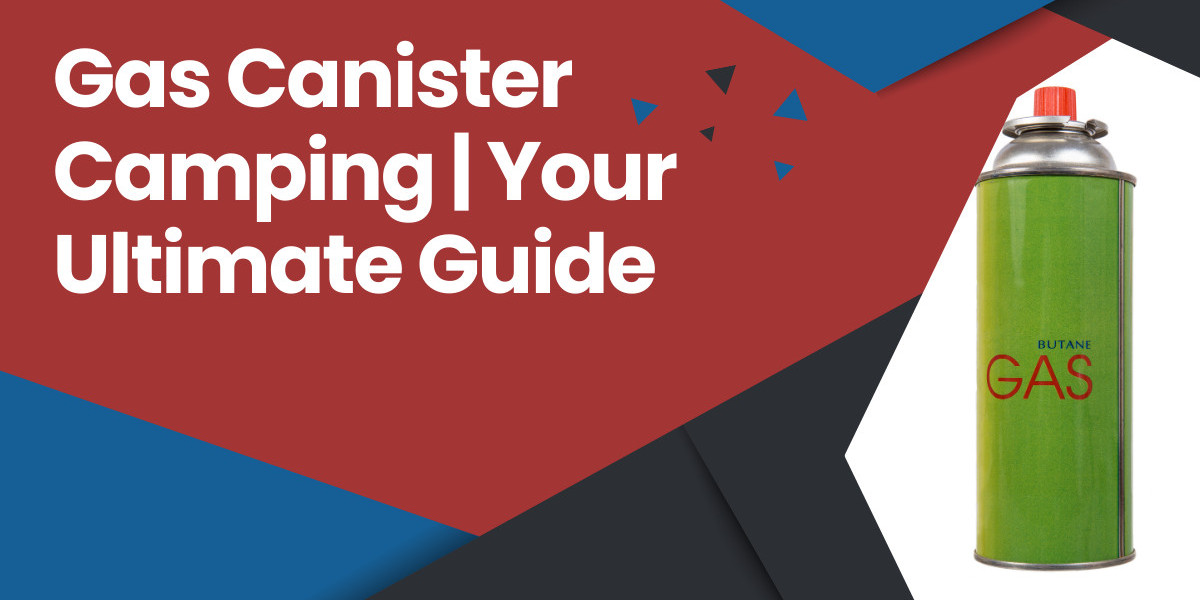Camping enthusiasts often seek practical and efficient solutions for their outdoor adventures. Among the essential gear, gas canister camping stands out as a game-changer. This comprehensive guide will delve into why gas canister camping is a top choice for campers, the benefits of using gas canisters, how to choose the right canister, and tips for safe usage. Whether you're a seasoned camper or new to the scene, this guide will provide valuable insights to enhance your outdoor experience.
What is Gas Canister Camping?
Gas canister camping involves using portable gas canisters as a fuel source for camping stoves and other outdoor cooking equipment. These canisters are compact, lightweight, and easy to use, making them ideal for outdoor activities where space and weight are critical considerations.
Why Choose Gas Canister Camping?
Convenience: One of the main advantages of gas canister camping is its convenience. Unlike traditional fuel sources like propane tanks, gas canisters are small, easy to pack, and require no additional setup. You simply screw the canister onto your stove and you're ready to cook.
Efficiency: Gas canister camping provides a high energy output, allowing for quick and efficient cooking. The canisters are designed to deliver consistent heat, which means your meals will cook faster and more evenly compared to using other fuel sources.
Portability: Gas canisters are incredibly portable. They are lightweight and take up minimal space, making them perfect for backpacking and other activities where carrying capacity is limited.
Ease of Use: Operating a gas canister stove is straightforward. Most stoves have a simple ignition mechanism that makes lighting the burner easy, even in windy or damp conditions. This user-friendly feature is especially beneficial for novice campers.
Environmental Impact: Many gas canisters are made from recyclable materials, and their efficiency reduces the amount of fuel required for cooking. This can contribute to a lower environmental footprint compared to using disposable fuel options.
Types of Gas Canisters for Camping
When it comes to gas canister camping, there are several types of canisters to consider:
Isobutane Canisters: These are the most common type used in gas canister camping. They contain a mixture of butane and isobutane, which provides a good balance of performance in various temperatures. Isobutane canisters are ideal for most camping conditions.
Propane Canisters: Propane canisters are another option for gas canister camping. They are especially useful in colder conditions as propane performs better in low temperatures compared to butane. However, they are usually bulkier and heavier.
Mixed Fuel Canisters: Some canisters combine propane, butane, and other gases to optimize performance across different environments. These canisters offer versatility for various camping situations.
How to Choose the Right Gas Canister for Your Trip
Selecting the appropriate canister for gas canister camping depends on several factors:
Size and Capacity: Consider the size of the canister based on the length of your trip and the number of people you'll be cooking for. Canisters come in various sizes, typically ranging from 100g to 450g. Larger canisters provide more fuel but can be heavier and bulkier.
Compatibility: Ensure that the canister is compatible with your camping stove. Most stoves use a standard screw-on or snap-on mechanism, but it's always best to check the specifications of both the canister and the stove.
Temperature Tolerance: If you plan to camp in colder climates, choose a canister that performs well in low temperatures. Mixed fuel canisters or those specifically designed for winter conditions are suitable options.
Weight: For backpacking trips, weight is a crucial factor. Opt for lighter canisters to minimize the load on your backpack. For car camping, weight is less of a concern, so you can prioritize other features like larger capacity.
Tips for Gas Canister Camping
Store Properly: Keep your canisters in a cool, dry place when not in use. Avoid exposing them to extreme temperatures or direct sunlight, as this can affect their performance and safety.
Use Safely: Follow the manufacturer’s instructions for proper use and handling. Always use canisters in well-ventilated areas to avoid the buildup of gas.
Dispose Responsibly: Many gas canisters are recyclable, but check local regulations for disposal. Some camping stores also offer canister recycling programs.
Check for Leaks: Before each use, check the canister for any signs of leakage. A soapy water solution can help detect leaks; if bubbles form, discontinue use and replace the canister.
Carry Spare Canisters: If you're going on a longer trip, carry extra canisters to ensure you have enough fuel for the entire duration.
Conclusion
Gas canister camping offers numerous advantages for outdoor enthusiasts, from convenience and efficiency to portability and ease of use. By understanding the different types of canisters, selecting the right one for your needs, and following safety guidelines, you can enhance your camping experience and enjoy delicious meals in the great outdoors. Whether you're a beginner or a seasoned camper, gas canister camping is a reliable and practical choice for your next adventure.







